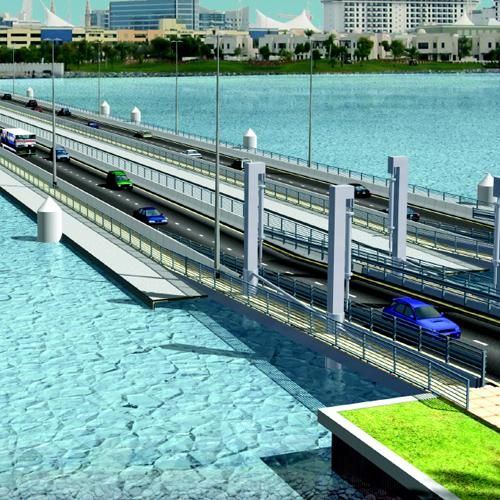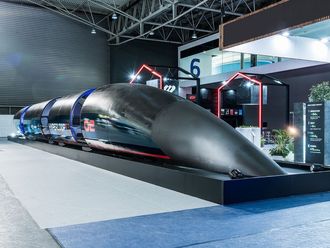The floating bridge builders Clement Systems Gulf have revealed that the new 300-metre bridge floats on top of Dubai Creek thanks to concrete-encased blocks of polystyrene.
The Dh160 million bridge was built by the Roads and Transport Authority to siphon traffic away from nearby bridges that were taking on more traffic thanks to the new Salik road toll system.
"The technology we developed is based on encasing polystyrene blocks - in this case more than 23,000 square metres - rather than air, with reinforced concrete and coated with polyurea," said Juergen Clement, Chief Executive Officer.
"This method is safe and provides a strong, stable, moveable and environmentally-friendly solution for Dubai."
He said the combination of concrete and hardened polystyrene foam has been patented for an unusual building design.
To construct the bridge, Clement Systems used 19,000 tonnes of cement and shored it up with 1,500kg of steel.
The bridge was built in 700 days.
"This is the longest floating structure of its kind in the world and will not only help alleviate Dubai's traffic flow, but instil another icon in Dubai's ever growing list of economic and structural achievements," he said.
According to a statement from the company, Clement drew his inspiration for the bridge from his childhood in Rostock, Germany, a city on the northern shore along the Baltic Sea.
In post-Second World War Germany, a lack of steel forced engineers in the region to build barges from concrete that floated by trapping air inside the concrete forms.
The bridge will withstand the elements, Clement said, of a salt-water creek environment. It is also designed to absorb the energy of wind and waves and evenly redistribute it to the structure.
- 19,000: Tonnes of cement used in contructing the 300-metre floating bridge













